
Mantidae is one of the largest families in the order of praying mantises, based on the type species Mantis religiosa; however, most genera are tropical or subtropical. Historically, this was the only family in the order, and many references still use the term "mantid" to refer to any mantis. Technically, however, "mantid" refers only to members of the family Mantidae, and not the 14 remaining families of mantises. Some of the most recent classifications have promoted a number of the mantid subfamilies to the rank of family, e.g. Iridopterygidae, Sibyllidae, Tarachodidae, Thespidae, and Toxoderidae, while other classifications have reduced the number of subfamilies without elevating to higher rank.

Gryllinae, or field crickets, are a subfamily of insects in the order Orthoptera and the family Gryllidae.

Tenodera is a genus of mantis in the family Mantidae which contains several species of praying mantises. The species in this genus can be found primarily in Africa, Asia and Australia, but also North America.

Acanthops is a genus of mantises in the family Acanthopidae, containing 20 species that can be found in Central and South America.
Bantia fusca is a species of praying mantis in the genus Bantia in the family Thespidae.
Bantia marmorata is a species of praying mantis in the family Thespidae.
Bantia metzi is a species of praying mantis in the family Thespidae.
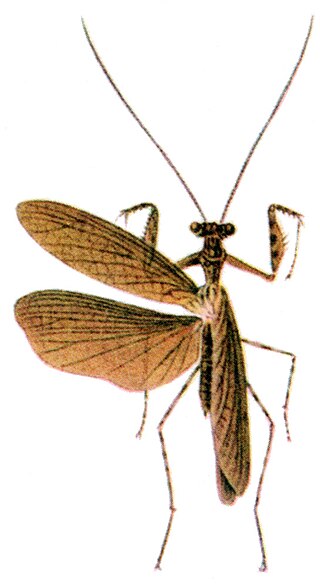
Bantia michaelisi is a species of praying mantis in the family Thespidae.
Bantia pygmaea is a species of praying mantis in the family Thespidae.
Bantia simoni is a species of praying mantis in the family Thespidae.
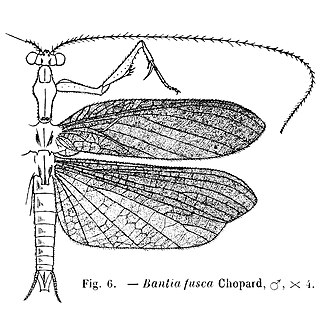
Thespidae is a family of Neotropical insects in the order Mantodea. Following a major revision of this order in 2019, the old-world subfamilies Haaniinae and Hoplocoryphinae, previously placed here, have been upgraded to family level.

Acanthopidae is a family of mantises consisting of 16 genera in the order Mantodea. The group was first formally split off as a separate family by the German entomologist Reinhard Ehrmann in 2002. In 2016, five genera were moved from Acanthopidae to the newly created family Acontistidae, but this has not been accepted in most recent classifications.

Loxoblemmus is a genus of crickets in tribe Gryllini. Species can be found in Africa, Asia and Australia.
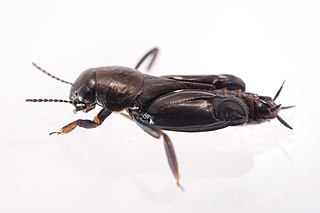
Xya is a genus of pygmy mole crickets, with species recorded from Africa, southern Europe, Asia and Australia.

Gryllini is a tribe of crickets and typical of the family Gryllidae. Species are terrestrial, carnivorous or omnivorous and can be found in all continenents except Antarctica.
Turanogryllus is a genus of crickets in the family Gryllidae and tribe Turanogryllini. Species can be found in Africa, Greece in Europe and throughout Asia.
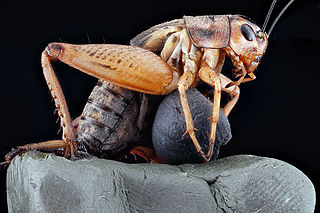
Velarifictorus is a genus of crickets in the family Gryllidae and tribe Gryllini. Species have been recorded in Australia, Asia, Africa and the southeastern US.
Tricondylomimus is an Asian genus of praying mantis in the family Gonypetidae. Formerly considered as a junior synonym of the genus Nemotha, Chopard's original genus name was restored in 2017.
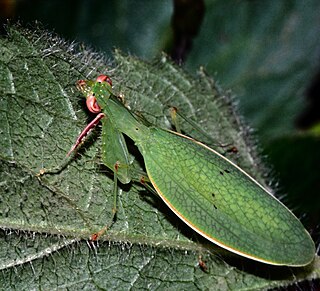
The Nanomantidae are a new (2019) family of praying mantises, based on the type genus Nanomantis. As part of a major revision of mantid taxonomy, genera and tribes have been moved here, substantially replacing the old family Iridopterygidae.












